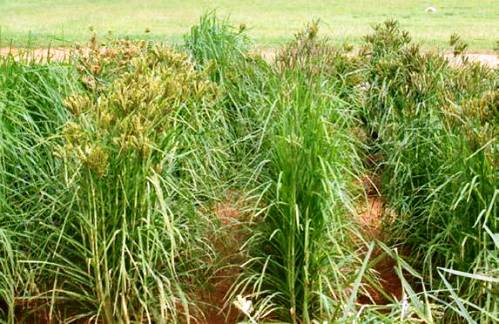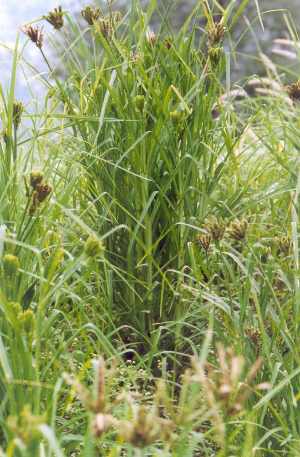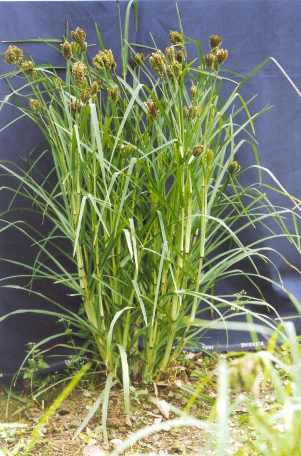Regeneration guidelines for finger millet
|
View regeneration guidelines in full (in PDF)
Also available in the following languages: |
The information on this page was extracted from:
Upadhyaya H.D., Gopal Reddy V. and Sastry D.V.S.S.R. 2008. Regeneration guidelines: finger millet. In: Dulloo M.E., Thormann I., Jorge M.A. and Hanson J., editors. Crop specific regeneration guidelines [CD-ROM]. CGIAR System-wide Genetic Resource Programme, Rome, Italy. 7 pp.
Before reading the regeneration details for this crop, read the general introduction that gives general guidelines to follow by clicking here.
Introduction
Finger millet (Eleusine coracana (L.) Gaertn.) is an important subsistence cereal in parts of Africa and south Asia. The species has two subspecies, africana (Kenn.-O’Byrne) K.W. Hilu & de Wet and coracana (L.) Gaertn. Subspecies africana has two races, africana and spontanea, while subspecies coracana has four races: elongata, plana, compacta and vulgaris (Prasada Rao et al. 1993). Finger millet is mostly self-pollinating, with some amount of cross-pollination (1%) mediated by wind (Jansen and Ong 1996; Purseglove 1972). Finger millet is very adaptable to a wide range of environmental and climatic conditions, thrives at higher elevations than most other tropical cereals and tolerates salinity better than most cereals.
Choice of environment and planting season
Climatic conditions
- Finger millet grows best in an environment with medium rainfall, an annual temperature range of 11 to 27°C and a soil pH of 5.0 to 8.2 (Duke 1978, 1979). Areas with low precipitation and low relative humidity during seed ripening and maturation are best for regeneration.
Planting season
- Carry out regeneration in the rainy season as finger millet requires moist conditions for germination.

Finger millet (Eleusine coracana) field. (photo: ICRISAT)
Preparation for regeneration
When to regenerate
- When seed stocks are <50g.
- When germination drops below 75%.
- If the percentage of seeds infected by one or more of the following fungi is >25%: Alternaria, Aspergillus, Cladosporium, Curvularia, Fusarium, Macrophomina, Penicillium, Phoma and Rhizopus spp.
Seed sample
- To maintain genetic integrity use seed from the original source, if possible.
- A minimum of 40 plants is required for regeneration.
- At least 3 g seeds are required for regeneration of a germplasm accession.
- Finger millet seed is small; take care when preparing the seed samples.
- For each accession, prepare one seed packet for planting each row.
- Label packets with identification number and row number and arrange them according to field lay-out.
Field selection and preparation
- Choose a field which was not under millet during the previous two years to reduce risk of volunteer plants.
- Keep the field well drained throughout the growing period and free from weeds at sowing.
- Prepare a fine tilth by deep ploughing, followed by three or four harrowings as plants will not grow in soil which is not well compacted.
- Make ridges 75 cm apart on a levelled field.
Method of regeneration
Finger millet is a self-pollinated crop and seed regeneration does not require any pollination control. Leave a distance of 3 m between accessions.
Planting layout, density and distance
- Divide the field into plots (also known as tiers), leaving a 1-m walking space between them. Plots should be at least 4 m wide.
- Mark rows 75 cm apart across each tier, perpendicular to the length of the field, giving rows of at least 4 m long or more, depending on the width of the plot.
- Distribute seed packets according to field plan.
- Ensure a minimum of 3 m between accessions.
- Assign row numbers in serpentine pattern (i.e. planting from left to right in the first row followed by right to left in the second row or vice versa).
Planting method
- Sow seeds by hand at a depth of 2.5 cm in a furrow and close the furrow after sowing.
Labelling
- Label each accession with a tag fastened to a stake about knee height.
- The tags should be of strong paper to withstand weathering.
Crop management
Weed management
- Weed by hand 21 days after planting.
- Remove alien plants.
Thinning
- Thin plants when seedlings are 2–3 weeks old, leaving 10 cm spacing between the plants and a minimum of 40 plants per accession.
Fertilization
- Apply fertilizers on the basis of soil test results. In the absence of a soil test apply diammonium phosphate at 100 kg/ha as a basal dose before sowing and 100 kg urea/ha as top-dressing 21 days after sowing.
Irrigation
- Apply supplemental irrigation after sowing if the soil is not moist enough; irrigate again if leaves wilt at any stage of crop growth and to ensure enough moisture in soil at flowering.
Common pests and diseases
Contact plant health experts to identify pests and diseases and appropriate control measures. Some of the major pests and diseases of finger millet are:
- Blast (Pyricularia grisea)—produces lesions on leaves, peduncle and ear. Severe infection may result in death of seedling
- Leaf blight (Helminthosporium nodulosum)
- Shoot fly (Atherigona milliaceae)
- Pink stem borer (Sesamia inferens)
 |
 |
|
Finger millet (photos: National Bureau of Plant Genetic Resources, Regional Station, Phagli, Shimla, India) |
|
Harvesting
- Finger millet cultivars are known to vary in time to maturity but ear heads can be harvested about 40 days after flowering to facilitate easy threshing.
- Harvest manually by cutting ear heads below the base.
- Collect ear heads from each row in a clearly labelled muslin cloth bag and dry in the shade for about 1 week.
Post-harvest management
- Dry panicles in shade to about 12% seed moisture content — ideal for hand threshing.
- Clean the seeds of debris by winnowing.
- Bulk equal amounts of seed from each plant to make up the accession.
- Avoid spillover and contamination during threshing and subsequent handling.
- Send a representative sample for observations on seed traits, seed health and viability testing.
- Reject seed samples with a high percentage of infection and list for next regeneration.
- Do not apply chemical treatment to seed intended for storage.
- Collect seeds in a labelled muslin cloth bag for further drying, preferably at a lower temperature and relative humidity.
- Dry seeds to 8–9% moisture content for medium-term conservation. For long-term conservation, dry the seeds to 5–7% moisture content using forced ventilation at 15°C and 15–20% relative humidity.
- If a drying room and forced ventilation facilities are not available, dry seeds to a moisture content of 5–7% with silica gel or another appropriate desiccant.
- Pack seeds in airtight containers for conservation and distribution.
Monitoring accession identity
Comparisons with previous passport or morphological data
- Verify accession identity using seed traits.
Documentation of information during regeneration
Collect the following information during regeneration:
- Regeneration site
- Name of collaborator
- Plot reference
- Sowing date
- Field layout used
- Field management details (watering, fertilizer, weeding, abnormalities recorded, others)
- Environmental conditions (altitude, precipitation, soil type, others)
- Germination in the field or greenhouse
- Number of plants established
- Days from sowing to flowering
- Breeding system
- Harvest date
- Number of plants harvested
- Quantity of seeds harvested
- Viability of seeds harvested
References and further reading
Advances in Small Millets. Oxford & IBH Publishing Co. PVT Ltd., New Delhi, India. pp. 331–346.
Purseglove JW. 1972. Eleusine coracana (L.) Gaertn. In: Tropical Crops. Monocotyledons. Longman Group Limited, London, UK. pp. 147–156.
Bioversity International, AICRP-Small Millets, IITA, ICRISAT, NBPGR. 2010. Key access and utilization descriptors for finger millet genetic resources. Bioversity International, Rome, Italy; All India Coordinated Research Project on Small Millets, India; International Institute of Tropical Agriculture, Nigeria; International Crops Research Institute for the Semi-Arid Tropics, India; National Bureau of Plant Genetic Resources, India. Available here.
Duke JA. 1978. The quest for tolerant germplasm. ASA Special Symposium 32, Crop tolerance to suboptimal land conditions. American Society of Agronomy, Madison, WI, USA. pp. 1–61.
Duke JA. 1979. Ecosystematic data on economic plants. Quarterly Journal of Crude Drug Research 17:91–110.
Jansen PCM, Ong HC. 1996. Eleusine coracana (L.) Gaertn. In: Grubben GHJ, Partohardjono S, editors. Plant Resources of South-East Asia, No. 10 Cereals. Backhuys Publishers,Leiden, The Netherlands. p. 90.
Prasada Rao KE, de Wet JMJ, Gopal Reddy V, Megnesha MH. 1993. Diversity in small millets collection at ICRISAT. In: Riley KW, Gupta SC, Seetharam A, Moshonga JM, editors.
Acknowledgement
These guidelines have been peer reviewed by Kameswara Rao, International Center for Biosaline Agriculture (ICBA), Dubai, UAE.
Comments
- No comments found






Leave your comments
Post comment as a guest